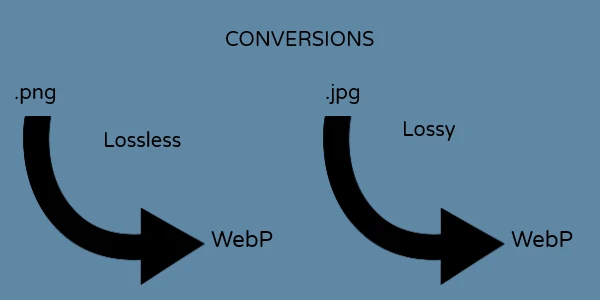In the ever-evolving digital landscape, the importance of optimizing your website for speed and performance cannot be overstated. As an author, your website is your digital storefront, and the images you use play a crucial role in engaging your audience. Enter WebP, a modern image format that promises to revolutionize the way we use images on the web. In this blog post, we’ll explore the history of WebP, its benefits, and why you should consider adopting it for your website.
The History of WebP
WebP is a relatively new image format developed by Google, designed to provide superior lossless (reversible) and lossy (irreversible) compression for images on the web. Key milestones in the development of WebP include:
- September 2010: Google announces WebP as a new format for lossy compressed true-color graphics on the web, offering smaller file sizes compared to JPEG for similar image quality.
- October 2011: This update allowed older animated GIFs to be converted to animated WebP.
- November 2011: Google announces a new lossless compression mode and support for transparency (alpha channel) in both lossy and lossless modes.
- April 2018: More features added. The supporting software library reaches version 1.0.
- September 2020: WebP support is added in Safari version 14, marking broader browser compatibility.
The Speed Advantage of WebP
One of the most compelling reasons to adopt WebP is the significant improvement in loading speed it offers. WebP images are typically 25-34% smaller than comparable JPEG images and 26% smaller than PNGs. This reduction in file size translates directly to faster loading times for your website, which is crucial for keeping your audience engaged. Faster loading times have several benefits:
- Improved User Experience: Visitors are more likely to stay on your site and explore your content if pages load quickly. Slow-loading pages can frustrate users and lead to higher bounce rates.
- Better Mobile Performance: With more users accessing websites on mobile devices, optimizing for speed is essential. Smaller image sizes mean faster load times on mobile networks, providing a smoother experience for your readers.
- Reduced Bandwidth Usage: Smaller images consume less bandwidth, which can be particularly beneficial if you have a large number of visitors or if your audience is in regions with limited internet access.
Browser Support and Compatibility
When WebP was first introduced, one of the main concerns was browser compatibility. However, over the years, support for WebP has grown significantly. As of now, WebP is supported by most major browsers, including:
- Google Chrome
- Mozilla Firefox
- Microsoft Edge
- Opera
- Safari (version 14 and later)
This widespread support means that the vast majority of your audience will be able to view WebP images without any issues.
However, watch out when using WebP in email–frequent problems are reported. So, for email, at least for the next 6 months, continue to use jpg images.
Image Converters
Windows’ Application

A free Windows’ application, often referred to as the “Swiss-Army Knife” of image conversion, is IrfanView. Despite the strange cat-like logo, it’s very effective. You can select either lossless or lossy compression. It will show you the type of compression that was used for any WepP image you might encounter.
https://www.irfanview.com/
Since your website’s home page is where most visitors land, that’s the place to start. Convert all the old image formats there for an immediate speed boost. Website plugins are available to do site-wide image conversions, but for a small website, simply make it your practice to use WebP images for your new blog posts and skip the added software.
Why You Should Care
As an author, you might wonder why you should care about image formats and website performance. The answer lies in the importance of providing a high-quality user experience and the impact of website speed on your search engine rankings. Google has made it clear that page speed is a ranking factor in its search algorithm. Faster websites are more likely to rank higher in search results, which can lead to increased visibility and more traffic to your site. By adopting WebP, you can improve your website’s performance, enhance user experience, and potentially boost your search engine rankings.
Conclusion
In conclusion, adopting the WebP image format for your website is a smart move that can lead to significant improvements in loading speed and user experience. With its superior compression capabilities and broad browser support, WebP is poised to become the standard for web images. As an author, optimizing your website for speed is crucial not only for keeping your audience engaged but also for improving your search engine rankings. Embrace the future of web images with WebP and give your website the performance boost it deserves.

R. C. Beckett was given a collection of Fantasy and Science Fiction Magazines as a teenager and read hundreds of the stories — he was hooked and started writing fiction in 2013. He loves to write hard science fiction, but can’t help adding a bit of humor. Publications: “Exit Mars” and “Exit Earth” (available on Amazon). “Exit Pluto”, the third in the Exit series, should be published in late 2020. He lives in Golden Colorado and is a member of Rocky Mountain Fiction Writers. Walking his dog is key to his writing since that’s when he imagines plots for his stories. He also volunteers as a webmaster for non-profit companies including SpecFicWriters.


